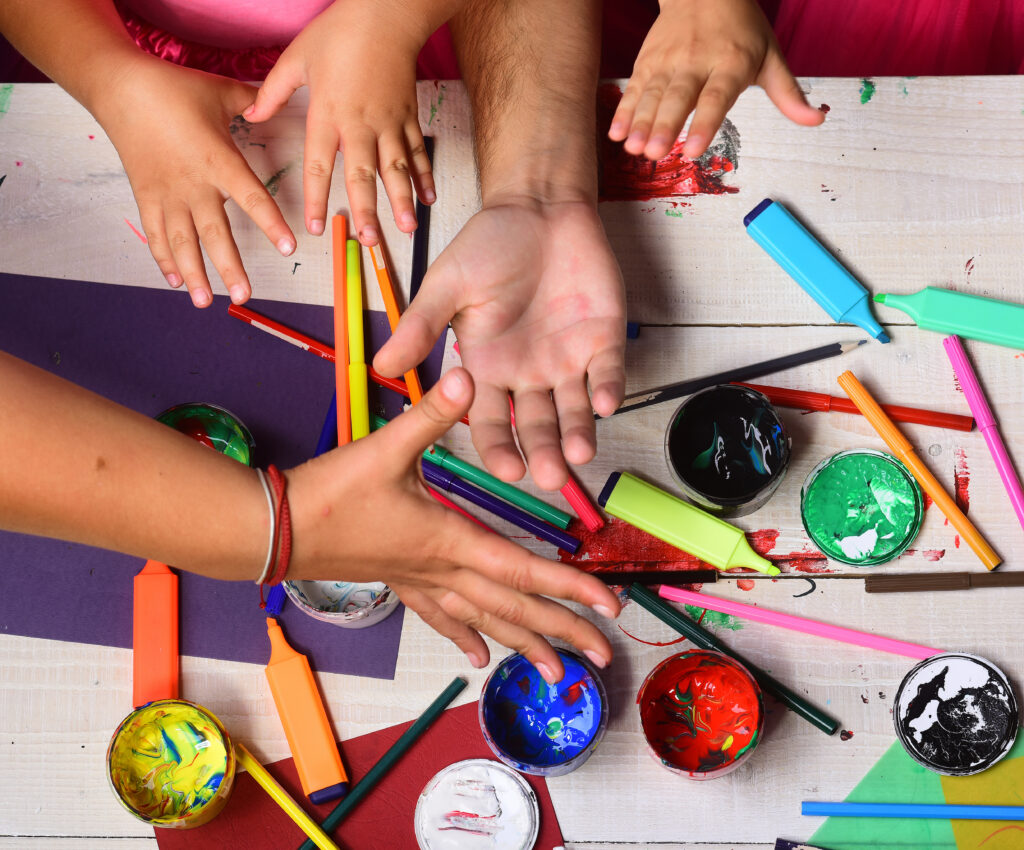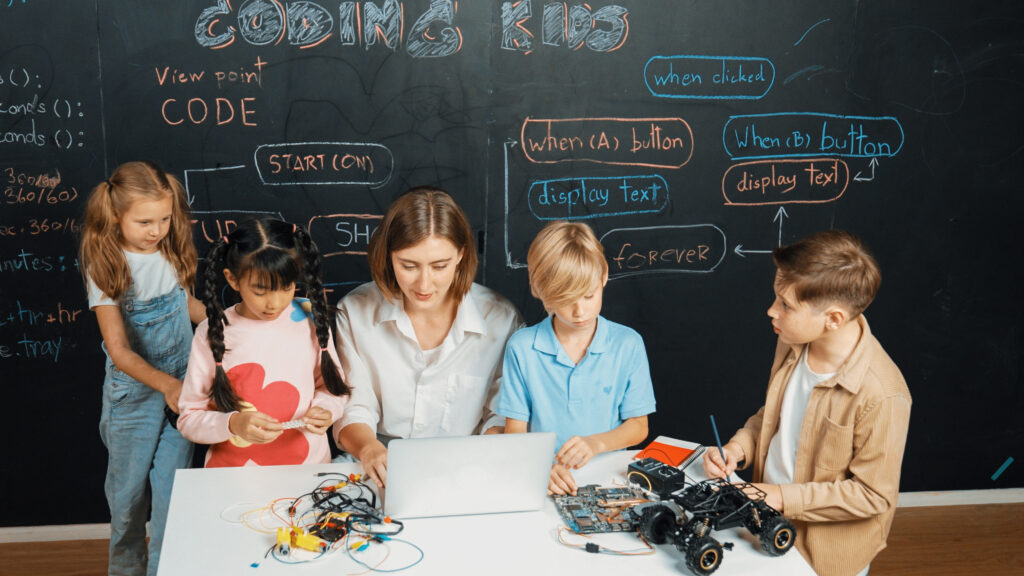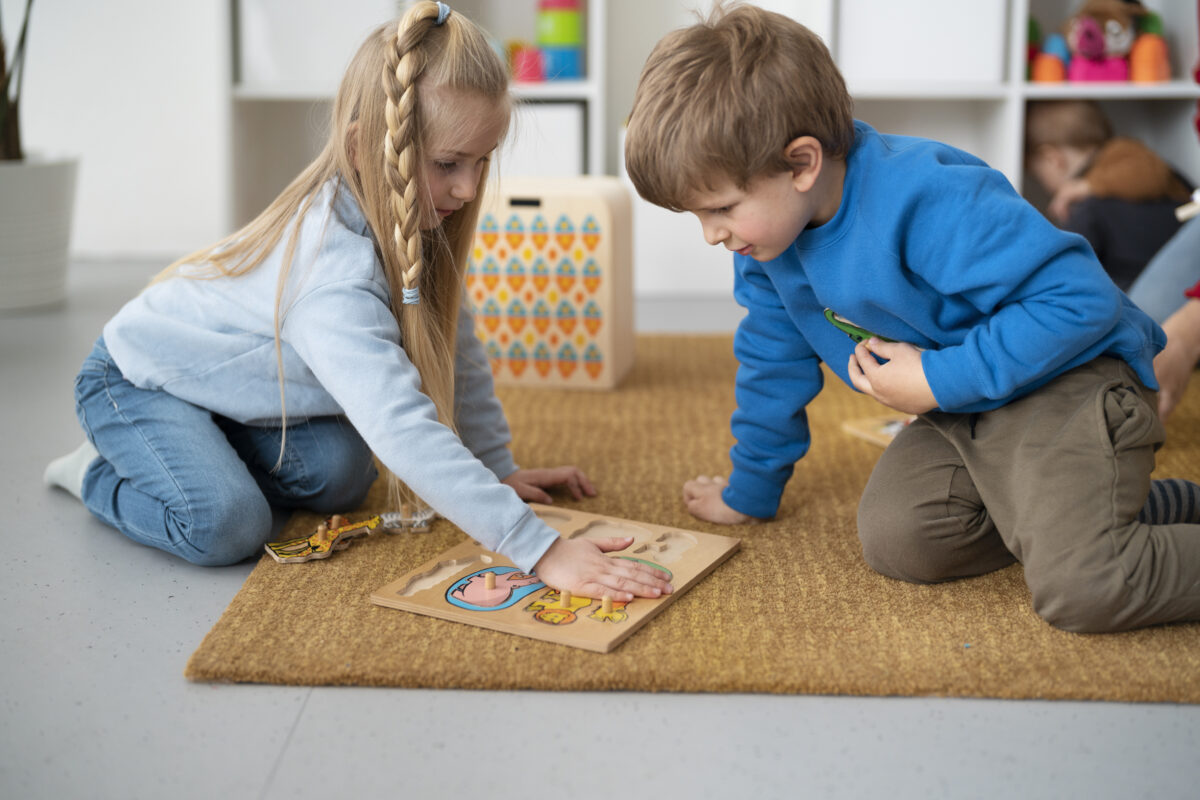Create a safe environment for students to express their emotions through writing, art, or discussions. Teach students healthy ways to express their emotions and resolve conflicts constructively. Create a supportive classroom environment in which students feel free to seek help and express their emotional needs.
Emotional intelligence enables students to better analyze situations. It not only improves students’ interactions with others, but it also allows them to approach academic issues more confidently. The better a student can deal with a situation, the more control they have over it.
Create a safe environment for students to express their emotions through writing, art, or discussions. Teach students healthy ways to express their emotions and resolve conflicts constructively. Create a supportive classroom environment in which students feel free to seek help and express their emotional needs.
Understanding Emotional Intelligence
Emotional intelligence is the ability to recognize your emotions, comprehend what they are telling you, and understand how your emotions affect others. Emotional Intelligence consists of five components: self-awareness, self-regulation, motivation, empathy, and social skills.
Demonstrating emotional self-regulation in the classroom.
Teachers can model emotional self-regulation by remaining composed in stressful situations and responding calmly to challenges. By doing so, they give students a real-life example of how to manage emotions constructively.

Encourage students to express and discuss their feelings.
Creating a classroom environment in which students feel comfortable expressing their emotions is critical. Teachers can encourage students to express their emotions by incorporating regular check-ins, discussion circles, and journaling activities. This helps students become more aware of their emotions and learn to express them.
Promoting Empathy
Facilitating perspective-taking activities
Perspective-taking activities, such as role-playing or discussions about different viewpoints, can help students develop empathy. These activities encourage students to consider others’ feelings and experiences, fostering a deeper understanding and compassion.
Emphasizing the importance of compassion and kindness
Teachers can highlight the value of compassion and kindness through classroom discussions, literature, and by recognizing and rewarding empathetic behavior. Celebrating acts of kindness can reinforce the importance of empathy in the classroom.
Strengthening Social Skills
Implementing cooperative learning techniques
Cooperative learning techniques, such as group projects and peer tutoring, can help students develop social skills. These activities require students to communicate, collaborate, and resolve conflicts, providing practical experience in social interactions.
Teaching conflict resolution and communication skills
Teachers can explicitly teach conflict resolution and communication skills through lessons and role-playing scenarios. Providing students with strategies to resolve disagreements and communicate effectively can enhance their social competence.
Strategies for Parents
Emotional Coaching at Home
Having open conversations about feelings
Parents can support their children’s emotional development by having regular, open conversations about feelings. Discussing emotions helps children become more comfortable with expressing their feelings and understanding their emotional responses.
Helping children identify and express emotions
Parents can assist their children in identifying and labeling their emotions. Using tools like emotion charts or journals can help children articulate their feelings and understand their emotional experiences better.

Fostering Emotional Regulation
Teaching coping strategies for managing stress and anxiety
Parents can teach their children various coping strategies to manage stress and anxiety, such as deep breathing, mindfulness, and physical activity. These techniques can help children regulate their emotions and reduce stress.
Modeling healthy emotional responses
Parents should model healthy emotional responses in their interactions. Demonstrating how to handle emotions constructively provides children with a blueprint for managing their own emotions.
Encouraging Empathy Development
Discussing current events and social issues
Parents can discuss current events and social issues with their children to promote empathy. These discussions can help children understand different perspectives and develop a sense of social responsibility.
Promoting volunteering and community involvement
Encouraging children to participate in volunteering and community activities can foster empathy and compassion. These experiences allow children to connect with others and understand the impact of their actions on the community.
Integrating EQ into the Curriculum
Cross-Curricular Connections
Incorporating emotional intelligence themes into academic subjects
Teachers can integrate emotional intelligence themes into various academic subjects. For example, literature classes can explore characters’ emotional journeys, while social studies can examine the role of emotions in historical events. This approach reinforces the importance of EQ across different contexts.
Designing project-based learning activities that build EQ skills
Project-based learning activities that require collaboration, problem-solving, and reflection can help students develop EQ skills. These projects encourage students to work together, manage their emotions, and reflect on their experiences.
Social-Emotional Learning Programs
Implementing evidence-based SEL curricula
Schools can implement evidence-based social-emotional learning (SEL) curricula that focus on developing EQ skills. Programs such as Second Step, RULER, or PATHS provide structured lessons and activities designed to enhance emotional and social competencies.
Collaborating with school counselors and psychologists
Teachers can collaborate with school counselors and psychologists to support students’ emotional development. These professionals can provide additional resources, guidance, and interventions tailored to students’ needs.
Measuring Progress and Celebrating Success
Assessing changes in students’ emotional competencies
Regularly assessing students’ emotional competencies can help track their progress and identify areas for improvement. Teachers can use tools such as surveys, self-assessments, and observations to measure students’ EQ development.

Recognizing and rewarding EQ development
Celebrating students’ progress in developing emotional intelligence is essential. Recognizing and rewarding achievements in EQ can motivate students to continue working on their emotional skills and reinforce the importance of emotional intelligence in their lives.
Emotional intelligence is a critical component of overall student development, particularly during the middle school years. By developing EQ, students can better manage their emotions, build stronger relationships, and achieve academic success.
Parents and students should actively participate in these activities
We encourage parents, teachers, and students to actively engage in the strategies outlined in this guide to foster emotional intelligence. By working together, we can create supportive environments that nurture students’ emotional and social growth, preparing them for a successful and fulfilling future.





























